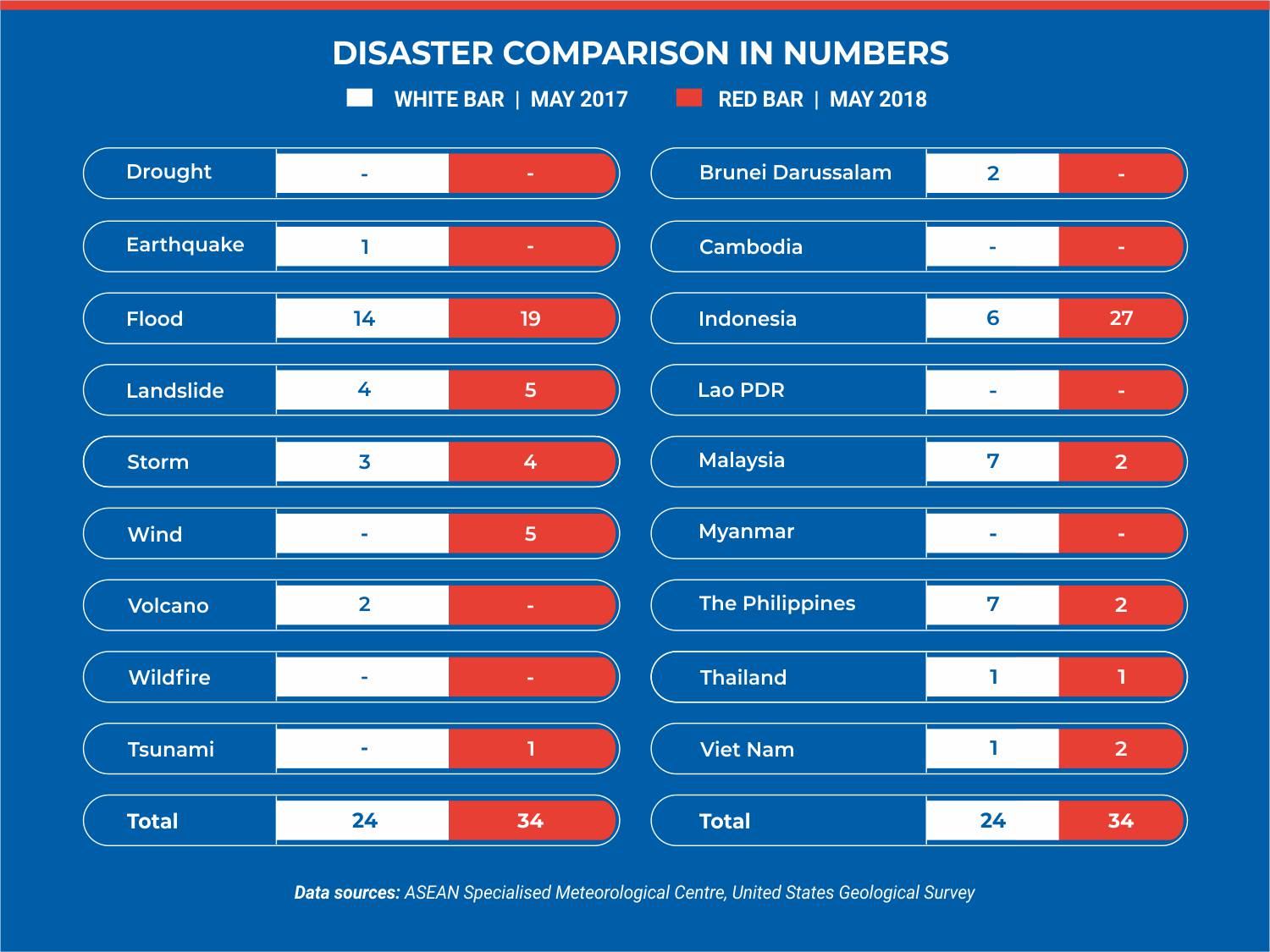
MONTHLY DISASTER REVIEW AND OUTLOOK
DECEMBER 2018 | DISASTER MONITORING & ANALYSIS
(DMA) UNIT, AHA CENTRE
GENERAL OVERVIEW OF DECEMBER 2018
As generally expected for the “winter” or Northeast monsoon period, the southern part of ASEAN – particularly Indonesia, Malaysia, southern Philippines and Thailand – experienced an increase in floods during December 2018. Some areas within those countries also experienced landslides due to heavy rainfall in mountainous areas.
In terms of geological hazards, 32 earthquakes of magnitude 5.0 or higher were reported in December, compared to 18 earthquakes recorded during December of 2017. However, none of the recorded seismic activities had significant effects to constitute a disastrous event. A M7.2 earthquake with a deep epicentre of 60 km below the earth’s surface was also reported near Davao Oriental, the Philippines, which triggered a tsunami warning – although the warning was eventually cancelled. In general, there were no fatalities or significant damage directly caused by earthquakes this month. However, there was one undetected tsunami event in Sunda Strait that caused significant number of fatalities and damage in Banten and Lampung Provinces of Indonesia. The tsunami, that struck on the evening of December 22, was triggered by landslide on Mount Anak Krakatau, that resulted from a series of eruptions and general increased volcanic activity on the mountain that sits in the middle of the Sunda Strait. From post-event observations, Mt. Anak Krakatau was found to have reduced in height from 1,800 metres to 357 metres, based on pre and post-tsunami images released by the Indonesian Agency for the Assessment and Application of Technology (BPPT). Consequently, the Centre for Volcanology and Geological Disaster Mitigation (PVMBG) elevated the alert status from advisory to watch (level III out of maximum IV).
OUTLOOK FOR JANUARY 2019
In the first week of the fortnight, a northeast monsoon surge is expected to cause wetter conditions in the South China Sea, particularly over coastal Thailand and Viet Nam. Related stronger monsoonal winds are likely to bring wetter weather to areas around the Java Sea as well. Conversely, drier conditions are expected over the Philippines. According to PAGASA climatology of tropical cyclones, there is a possibility of up to one tropical cyclone passing through the Philippines in January. Colder conditions in the highlands of the northern ASEAN region are forecasted. Following the cold conditions in the first week, should there be a sudden drop in temperatures, it might result in increased risk of flash floods with melting of snow or increased precipitation in the highlands.
Later in the month, the wetter conditions over the South China Sea are likely to spread further southward to affect the north-eastern coast of Peninsular Malaysia and southern Thailand. Thunderstorms are expected near the equatorial belt as the trade winds will bring heavier rainfall across the South China Sea towards Peninsular Malaysia and Singapore from the eastern front. Areas around the Java Sea are likely to become drier during this period.
The prevailing Northeast Monsoon is expected to persist until March 2019. This will bring occasional extended periods of dry weather in the northern ASEAN region during this period. Tropical storms and depressions will generally pass through Central and Southern Philippines, and towards Central and Southern Viet Nam bringing heavier rainfall in these regions. Cold spells will also be common in the northern lowland provinces of Viet Nam.
Written by : Qing Yuan Pang
DISCLAIMER
Disclaimer: AHA Centre’s estimation is based on data and information shared by National Disaster Management Organisations (NDMOs) and other relevant agencies from ASEAN Member States, international organisations and news agencies. Further information on each recorded-significant disaster, description and detail of data and information are available at: http://adinet.ahacentre.org/reports.





